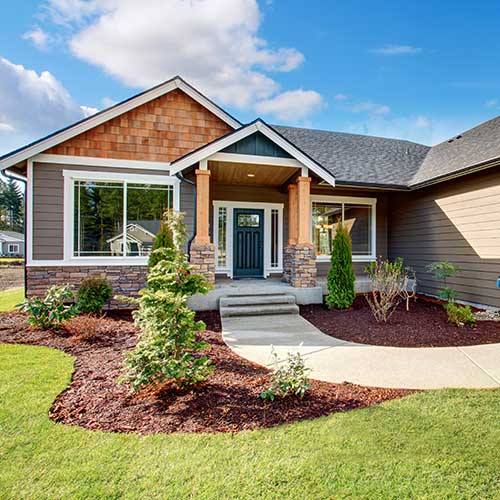
How to Paint a Beautiful Color Over Your Wood Trim
Replacement would take a great deal of time, effort and money. Painting it, on the other hand, would be easier and give the room character. If you choose to paint your wood trim you can hire professionals for the job or, if you are like many homeowners, why pay someone to do what you can easily do yourself? And when you do this job yourself, after completion, you have the satisfaction of kicking back, relaxing and enjoying the pleasure of accomplishment.
Basics of Painting Wood Trim
Updating your home by painting the wood trim can give it that fresh modern look. To do a professional-looking job, make an assessment of what you are working with. Are you painting over old paint or are you working with bare wood? Either way, you’ll begin with a good cleaning job; how you proceed from there will be determined by the surfaces you’re working with.
Note: If you are working on a home built before 1979 you must check for lead in painted surfaces. Your public health department has information on how to do this safely. Sanding or scraping lead-based paint creates a health hazard for you and your family, so if you are working on an older home, do the lead check before starting your project.
Cleaning the Wood Trim
The first thing to do is make sure the surfaces are clean. Remove any dust or residue buildup on the trim so the new paint will adhere better. You can use a scrub sponge with a slightly abrasive side to help clean off the wood. Use two buckets, one for cleaning and one for rinsing; have a second sponge for rinsing as well. You will have to change the water every so often as it becomes grimy.
As you clean the wood trim, you will want to take extra care in those areas with high-hand contact. These areas include windows, door frames, around door handles and knobs. You may also need to take extra time cleaning wood trim in the kitchen area which is notorious for collecting greasy dirt and grime.
If you come across stains on the woodwork, attempt to remove them with special stain removal cleaners. If that fails, use a stain-blocking primer. Once the trim is thoroughly cleaned, the next step is sanding.
Sanding the Surface
The purpose of sanding is to remove any glossy areas, so the primer and paint will stick to the wood better. Previously painted surfaces may need extra work. If there is a large build-up of old paint, it may need to be removed. You can test this by making taking a knife and making an “x” on the paint then placing a piece of duct tape over it. If paint comes off on the tape when you remove it, then you’ll need to remove the paint. If not, you’re good to go.
If you need to remove the loose paint you can use a paint scraper. A putty knife works well to clean out paint in corners and crevices. Be sure to work smoothly and don’t gouge the wood.
Some painted areas may be gummy. If you are sanding these areas, use no-clog sandpaper. Generally, you should use a fine 180 grit sandpaper to smooth the surface. Only use coarse sandpaper to smooth very rough areas or imperfections. You can also use coarse sandpaper to get rid of large globs of old paint.
To make sanding easier use a sanding block or a sanding sponge. The sanding sponge makes getting into curves and crevices easy. These devices also help keep your fingers from quickly becoming fatigued during the sanding process.
Once the sanding is completed, the next step is to dust and vacuum the trim. You can use an old paintbrush to dust off the sanded areas. Vacuum the trim with the brush head of your vacuum. Now it’s time to spackle any holes and add wood filler to damaged areas. After this step is completed, sand the repaired areas so they are smooth and ready for priming.
Priming and Painting
If you have carpeting or hardwood floors to protect, put down a drop-cloth and use painter’s tape around the edges to prevent paint from going places you don’t want it to go. Choose a 3-inch angled brush, or the size to fit your job, to apply the primer and paint.
Apply the primer and make sure to cover repaired areas thoroughly. Let your primer dry for at least 24 hours. Check the spackled areas and places where you applied wood filler. These areas may need a second coat of primer.
After the primer is dry you can paint the trim. Using small strokes, paint the trim in sections. When you’ve covered a few feet with small strokes, go back and use a longer stroke to smooth out the smaller brush strokes. Continue in the way until the trim is completely painted. Remove the painter’s tape before the paint dries.
The preparation work for painting your wood trim may take quite a while, but when you finish and see the end result, you’ll be glad you put in the time and effort. You also have the option of getting that professional look without the work and hassle. NevadaPainting Company has experienced professionals that will paint your wood trim perfectly. We even offer assistance in picking the best color for your trim. Contact us today for help with your painting needs in Las Vegas, Nevada.
